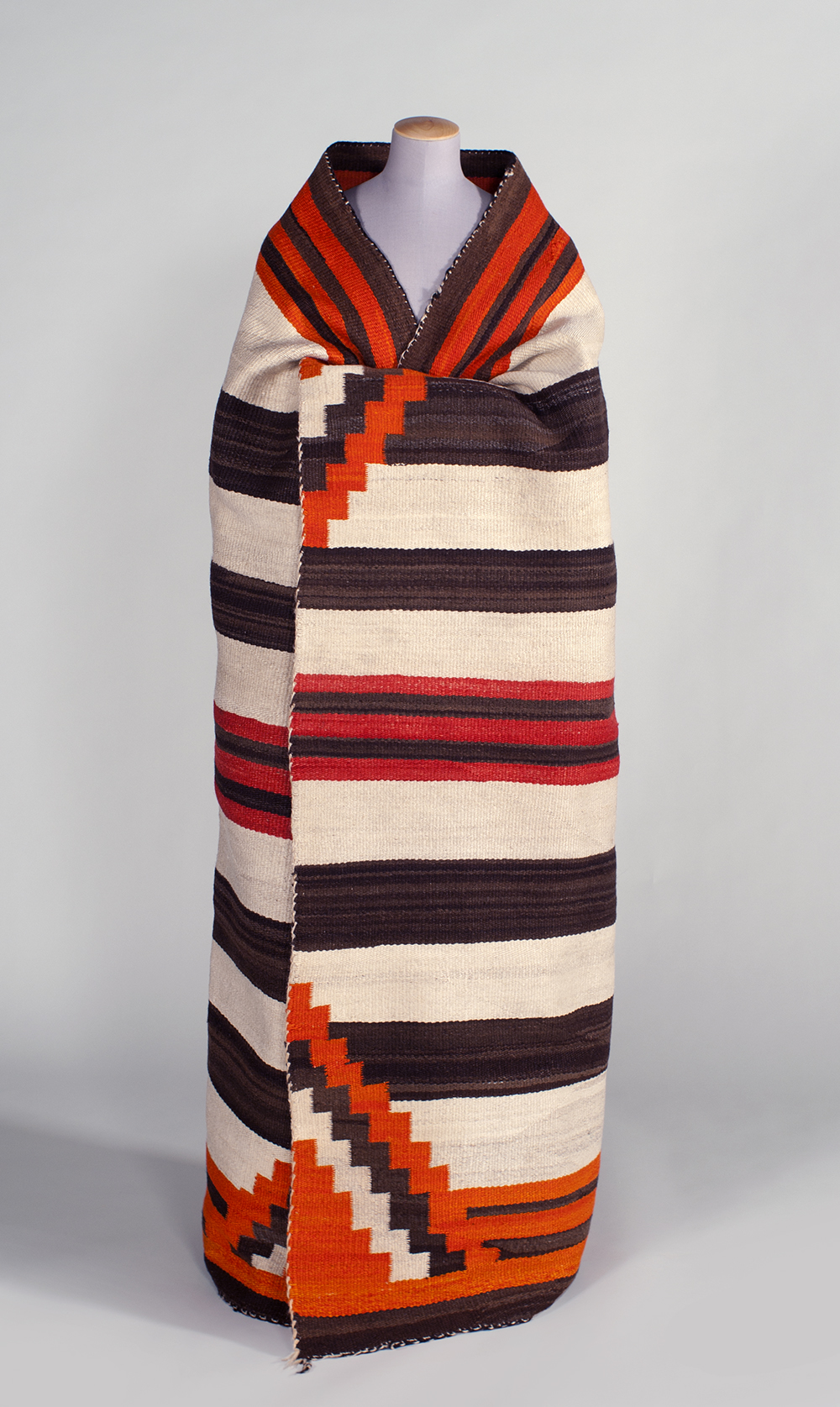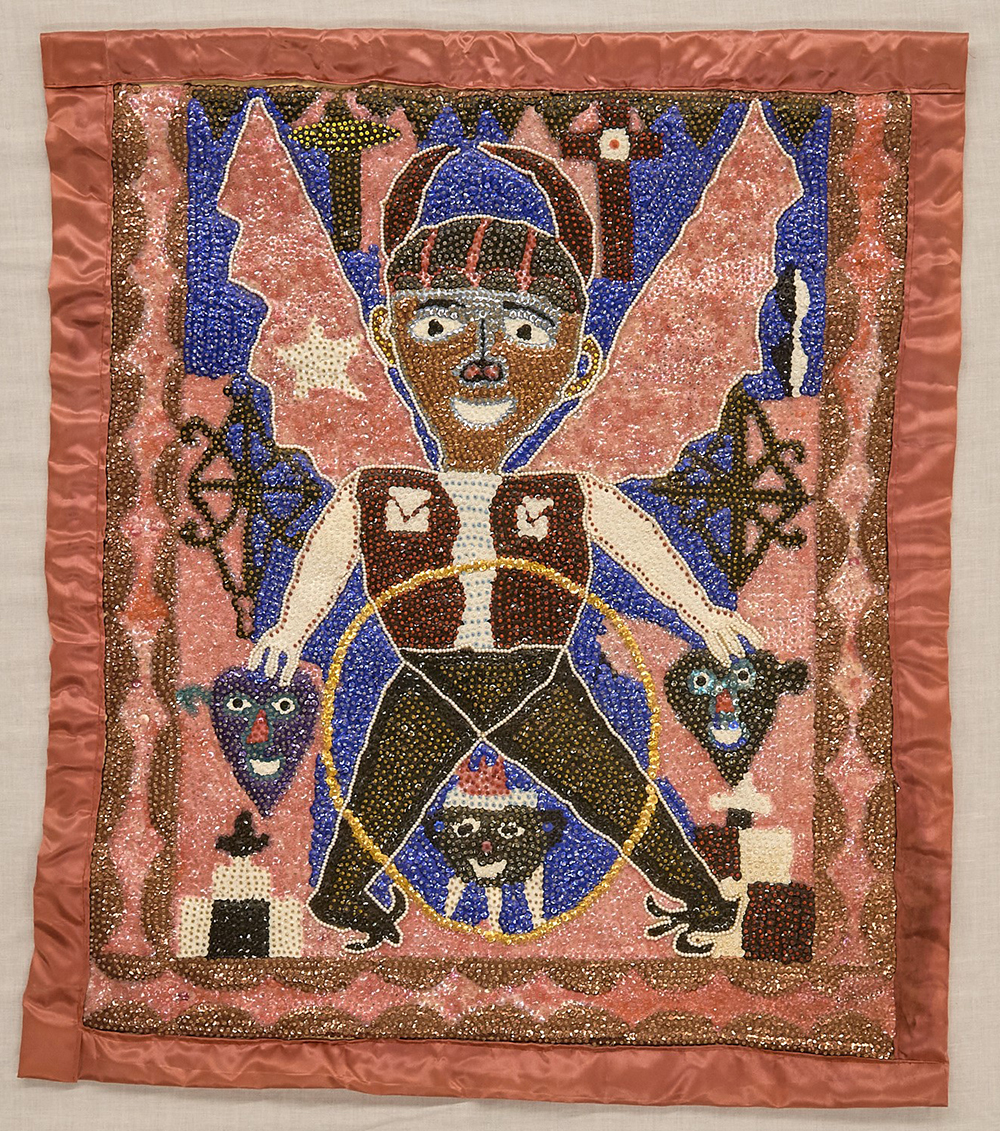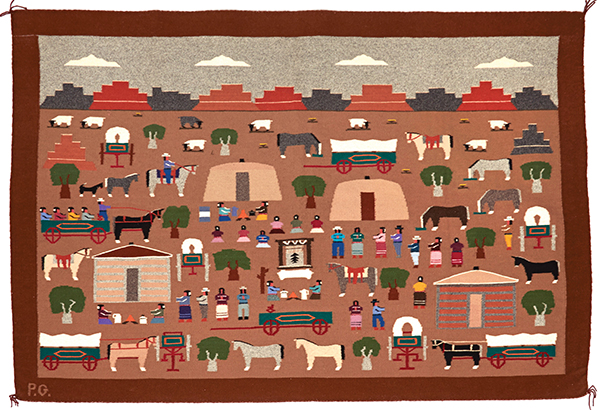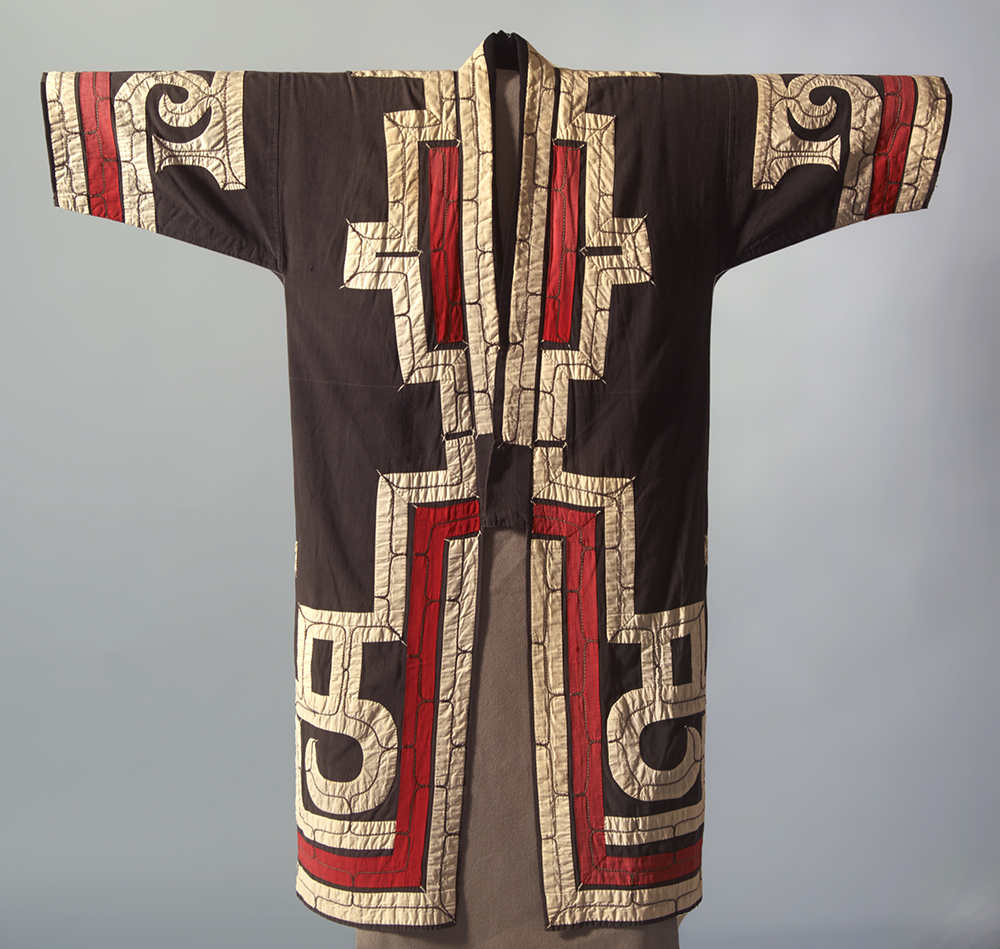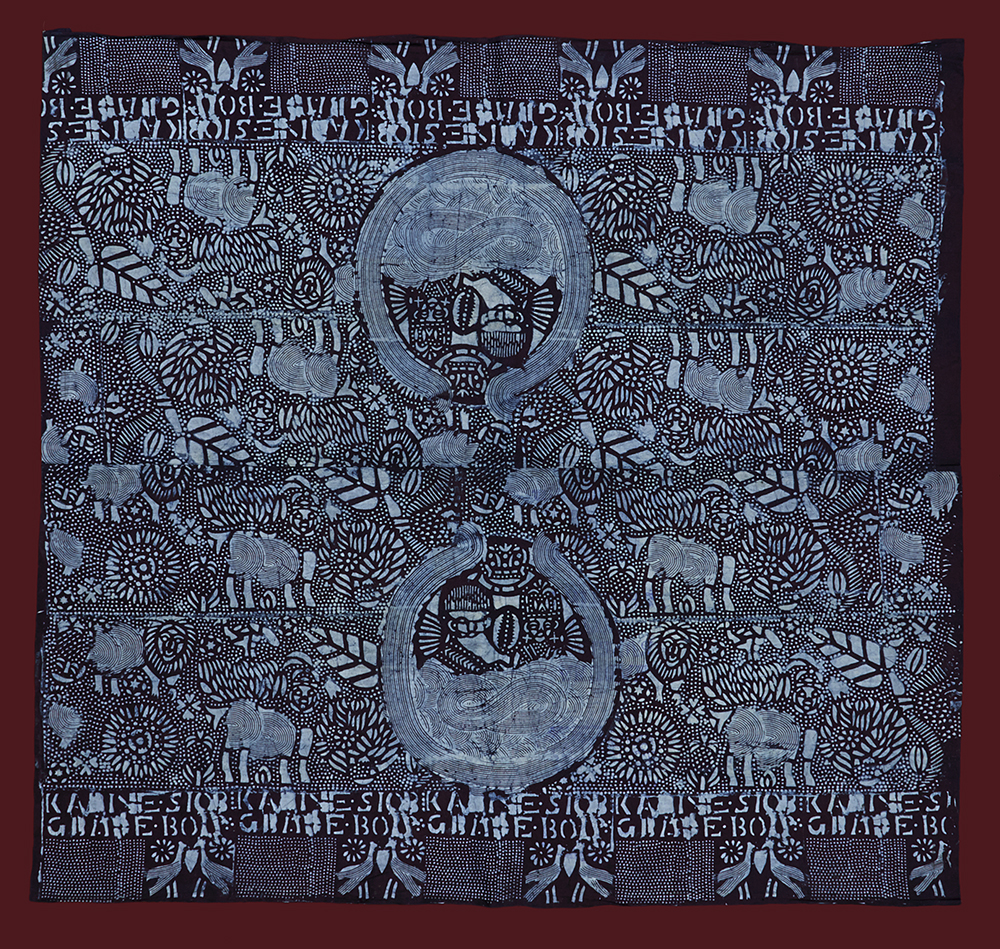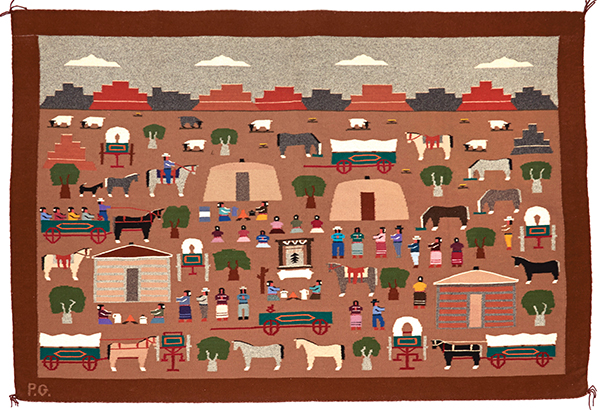
Material Messages: The Tales That Textiles Tell
Opening March 21, 2024
For thousands of years cultures around the world have used cloth as a means of visual communication—a way to document, celebrate, commemorate, and depict events large and small. Nonverbal tools play an important role in interactions within and between cultures, as verbal communication comprises only a small part of the ways that we, as human beings, share information and connect with each other. Material Messages features textiles created by a diversity of global artists that highlight this communication through cloth.
In the way that in western culture a wedding dress is cherished and passed down to the next generation or a t-shirt reminds us of a favorite concert, cloth contains both meaning and memory. The works in this exhibition were created by artists who developed unique vocabularies to express and record meaning through techniques including color, pattern, motif, weaving, dyeing, embroidery, and appliqué. They are storytellers and culture bearers, and their work expresses how various cultures communicate messages through their particular cloth-making practices.

Title: White cotton huipil with dense woven patterning around the neck
Artist Unknown
In many cases, the materials used for these textiles are deeply connected to the environments of the cultures who produce them. A dance skirt from the Democratic Republic of the Congo is created from the bast fibers from a Raphia Palm tree, native to the country. An Inuit inlaid appliqué fur cloth is made of skin from caribou and seal, animals which are a part of the traditional foods in this area. In this way, a garment or piece of cloth becomes, even in its most elemental parts, a document of people and place.
Most of the items in this exhibition are handmade, with a particular visual character distinct from industrially manufactured textiles. And in the way that a good book might have folded corners and faded pages, these textiles bear the marks and scars of use that in themselves tell a story. These cloths are rooted with the narratives of daily life, ceremony, celebration, and death, and their making can be as sacred as their ultimate use. In some cultures, they would be blessed by priests as they are constructed; in others, artists would use special hand-carved tools that invoke the assistance of the ancestors to aid in their creation. Whether or not the makers’ main mission was to create a work of art, the artistry and craftsmanship embedded in their creations is undeniable.
Precious Lovell
Precious Lovell is a mixed media artist. Her sociocultural creative practice explores the narrative potential of cloth and clothing. She holds a Master of Art and Design in Fibers and Surface Design and a BFA in Fashion Design. A former fashion designer and Associate Professor, Precious has presented lectures on cloth and clothing of the African Diaspora at universities, museums and national and international conferences. She has been granted fellowships, international artist residencies and has traveled to 45 countries researching and collecting textiles and clothing. Based in Raleigh, North Carolina, Precious’ work has been exhibited in the Us and internationally.

